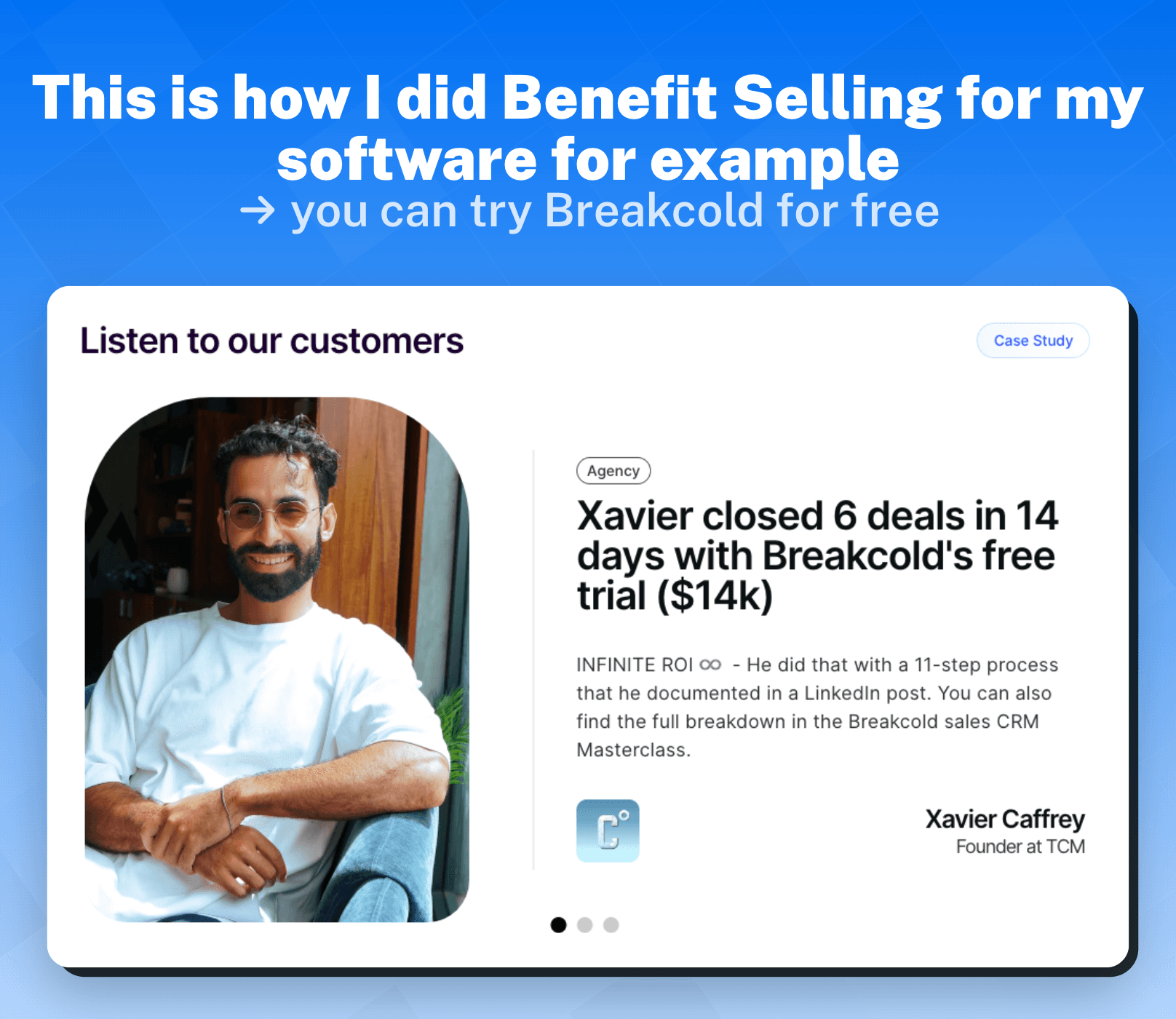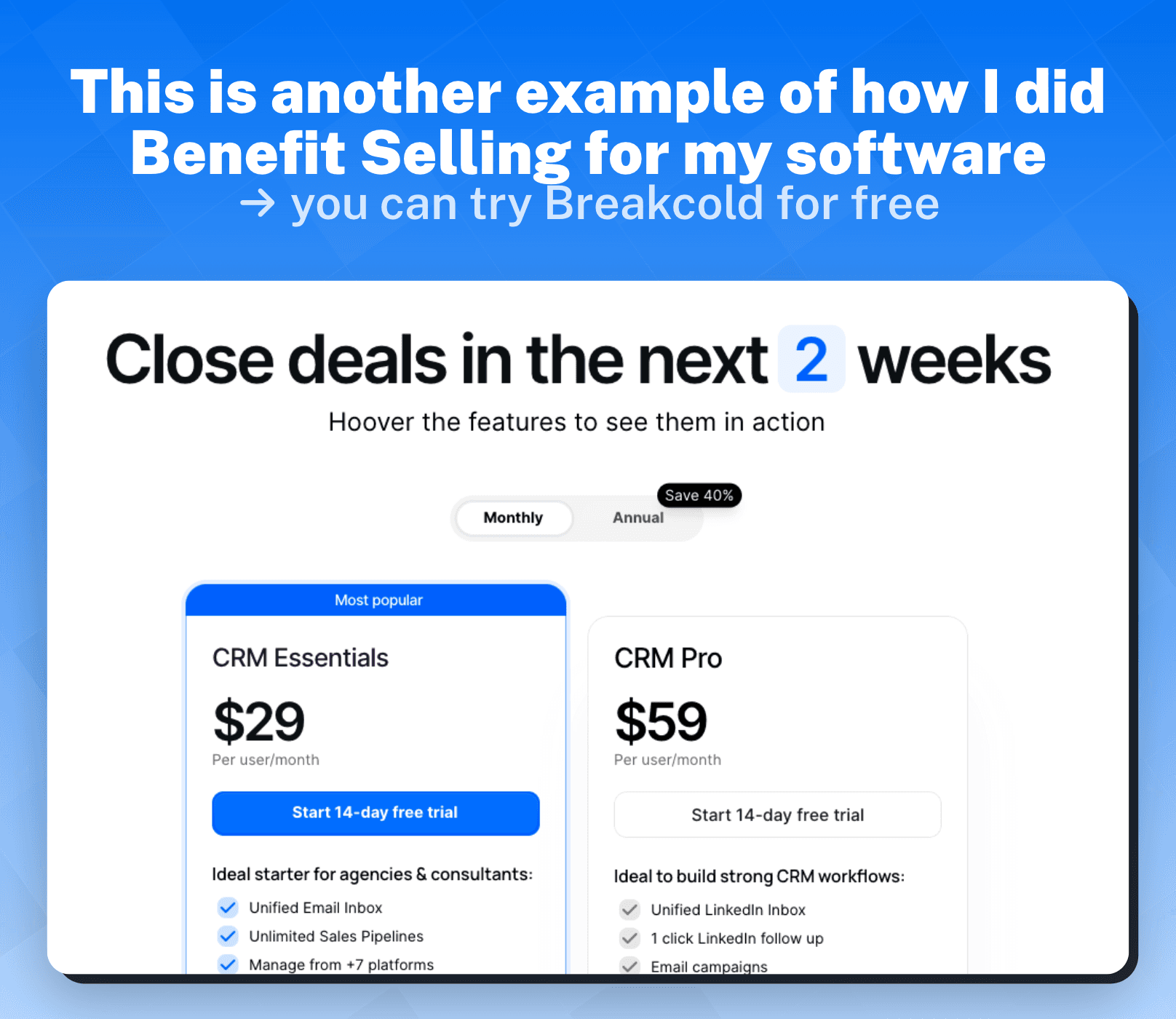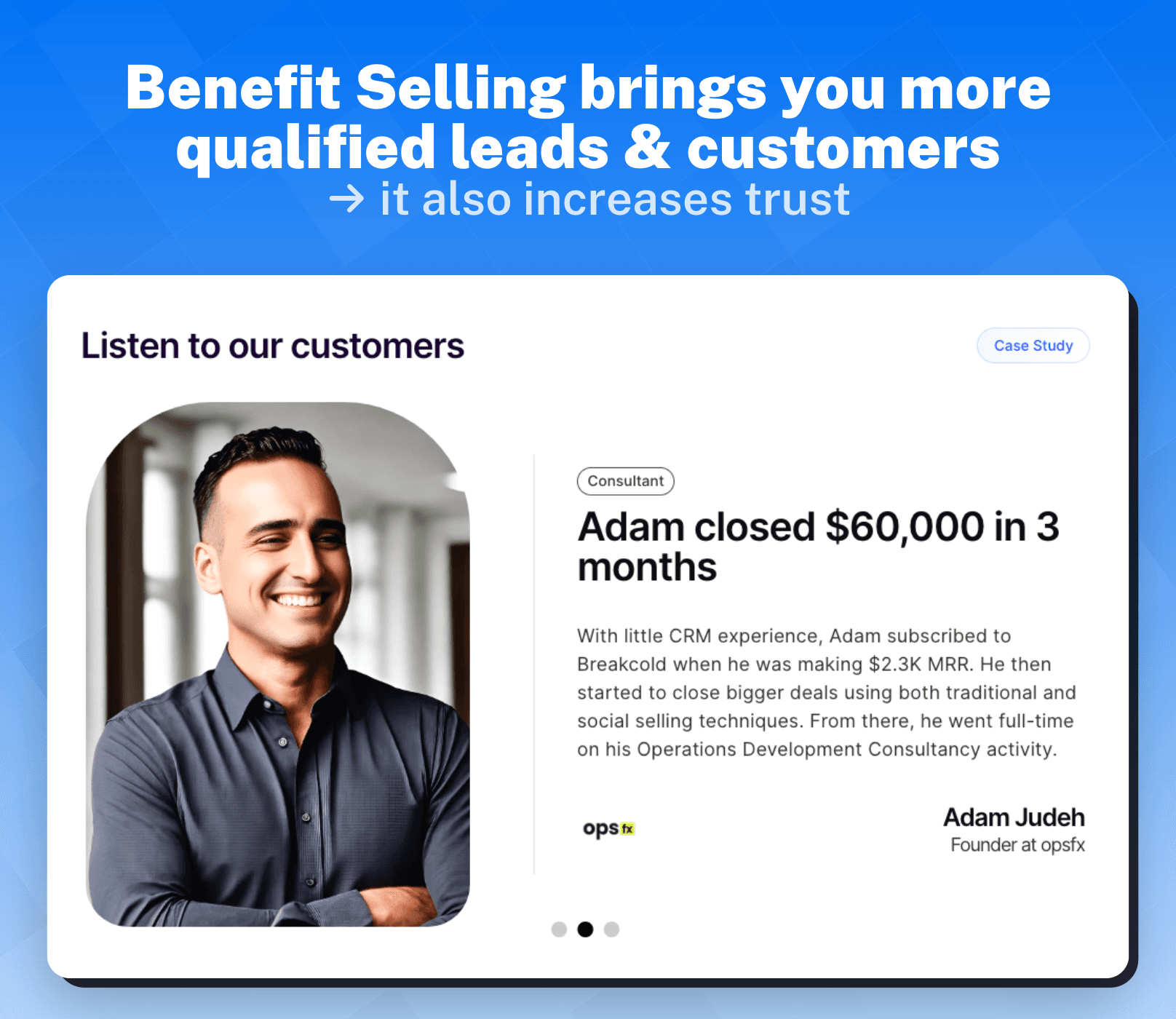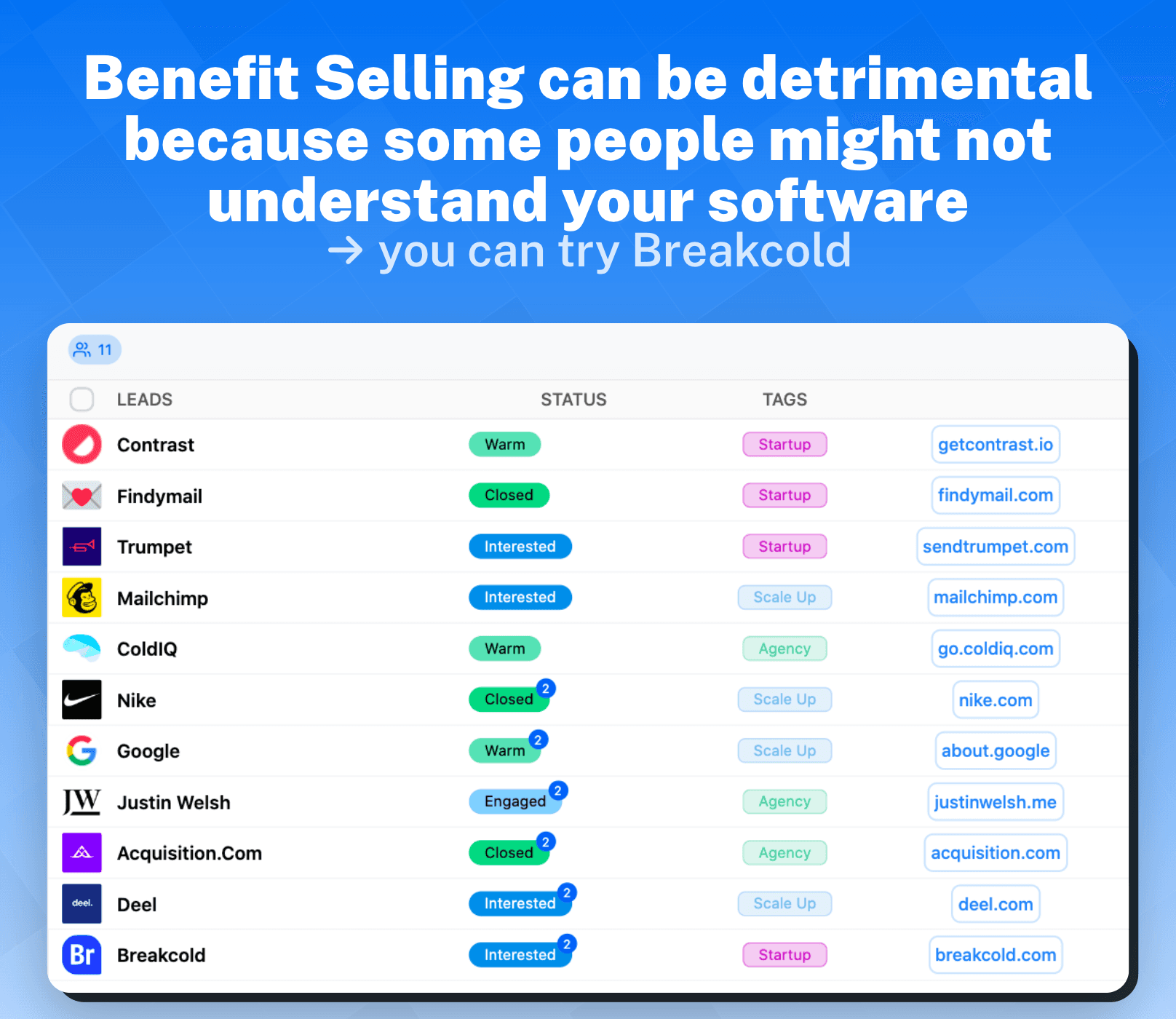
What is Benefit Selling? (Explained With Examples)
Benefit selling is a strategy used by sales professionals to focus on highlighting the advantages and benefits that their product or service can offer to potential customers. It involves moving away from simply presenting features and instead focusing on how those features can solve a customer's problem or fulfill their needs. By highlighting the specific benefits, salespeople can create a stronger and more compelling case for why their product or service is the right choice. In this article, we will explore what benefit selling is, examine its advantages and disadvantages, and provide examples of how it can be implemented in different contexts.
What is Benefit Selling?

Benefit selling is a sales technique that aims to demonstrate the value and advantages that a product or service can provide to potential customers. It shifts the focus from simply describing features to showing how those features can positively impact the customer's life or business. The goal is to create a connection between the product or service and the customer's needs or desires, ultimately convincing them that it is the best solution.
When implementing benefit selling, sales professionals go beyond just presenting the technical specifications or capabilities of a product. They delve into the potential benefits that customers can derive from using the offering. By highlighting these benefits, salespeople can tap into the emotional and practical needs of customers, making the sales process more engaging and persuasive.
Definition of Benefit Selling

Benefit selling can be defined as a sales approach that involves emphasizing the benefits and outcomes that customers can expect from using a particular product or service. It requires understanding the customer's needs, pain points, and goals in order to effectively communicate how the offering can address those issues and provide value. By highlighting the benefits, sales professionals can differentiate their product or service from competitors and increase the likelihood of making a sale.
When engaging in benefit selling, salespeople need to have a deep understanding of their target audience. They must be able to identify the specific pain points that customers are experiencing and articulate how their product or service can alleviate those challenges. By doing so, they can establish themselves as trusted advisors who genuinely care about solving customer problems rather than just making a sale.
Advantages of Benefit Selling

There are several advantages of implementing benefit selling in sales strategies:
Enhanced customer engagement: Benefit selling allows salespeople to connect with customers on a deeper level by demonstrating how their product or service can positively impact their lives or businesses. By focusing on the benefits, sales professionals can create an emotional connection with customers, making them more receptive to the sales pitch.
Increased perceived value: By focusing on the benefits, sales professionals can enhance the perceived value of the offering in the eyes of the customer, making it more appealing and justifying a potentially higher price. When customers understand the value they will receive, they are more willing to invest in the product or service.
Improved differentiation: Benefit selling helps differentiate a product or service from competitors by highlighting unique advantages and positioning it as the superior choice. By clearly articulating the benefits that set their offering apart, salespeople can position themselves as industry leaders and gain a competitive edge.
Addressing customer needs: By understanding the customer's pain points and goals, benefit selling allows salespeople to tailor their pitch to directly address those specific needs, increasing the likelihood of closing a sale. This personalized approach demonstrates to customers that their unique requirements are being considered, building trust and rapport.
When benefit selling is effectively implemented, it can transform the sales process from a transactional exchange to a consultative partnership. Sales professionals become problem solvers who are genuinely invested in helping customers achieve their goals.
Disadvantages of Benefit Selling

While benefit selling has numerous advantages, it is important to be aware of its potential disadvantages:
Requires in-depth knowledge: Benefit selling requires a deep understanding of the product or service and its benefits. This may require significant training and continuous learning to effectively communicate the advantages to potential customers. Sales professionals need to stay updated with the latest features and benefits of their offering to effectively address customer needs.
Time-consuming: Crafting personalized benefit-driven pitches can be time-consuming, especially when dealing with multiple customers and their unique needs. It requires careful analysis and customization for each individual. However, the time invested in understanding customer needs and tailoring the pitch can yield higher conversion rates and customer satisfaction.
May not resonate with all customers: Not all customers may respond positively to a benefit-driven approach, as some may prefer a more feature-focused or price-driven sales pitch. Salespersons need to adapt their approach based on individual customer preferences. This requires the ability to assess customer receptiveness and adjust the sales strategy accordingly.
Despite these potential disadvantages, benefit selling remains a powerful sales technique that can significantly impact the success of a sales team. By effectively communicating the value and advantages of a product or service, sales professionals can build trust, differentiate themselves from competitors, and ultimately close more deals.
Examples of Benefit Selling
Example in a Startup Context
Imagine a startup that has developed a new project management tool. Instead of solely listing the features, the sales team focuses on the benefits that their tool offers. They highlight how their tool can streamline project workflows, increase team collaboration, and ultimately save time and money for the organization. By showcasing the tangible advantages, they are able to attract potential customers who are looking for an efficient solution to their project management needs. This is exactly what I did for my sales pipeline software.
Example in a Consulting Context
A consulting firm specializing in marketing strategy can use benefit selling to differentiate themselves from competitors. Instead of simply presenting the various consulting services they offer, they focus on the outcomes and benefits they can deliver. For example, they emphasize how their expertise can help clients increase their market share, improve customer satisfaction, and achieve higher ROI on their marketing campaigns. By showcasing these benefits, they can convince potential clients that their consulting services will provide tangible and valuable results.
Example in a Digital Marketing Agency Context
A digital marketing agency may adopt a benefit selling approach when pitching their services to potential clients. Instead of solely highlighting the various digital marketing channels they offer, they focus on the benefits that the client can expect. This could include improved brand visibility, increased website traffic, higher conversion rates, and ultimately, a boost in revenue. By demonstrating the specific benefits of their services, they can persuade clients to choose their agency over competitors.
Example with Analogies
An effective way to explain the concept of benefit selling is through analogies. Imagine a salesperson selling umbrellas. Instead of merely describing the features like size, color, and durability, they focus on how their umbrella can provide protection and peace of mind on a rainy day. By comparing the umbrella to a trusted guardian shielding customers from the discomfort of getting wet, they create an emotional connection and emphasize the benefits of staying dry and comfortable in unpleasant weather.
Conclusion
Benefit selling is a powerful sales technique that allows professionals to connect with potential customers on a deeper level. By focusing on the advantages and outcomes, rather than just features, benefit selling enhances customer engagement, increases perceived value, and differentiates products or services from competitors. However, it requires in-depth knowledge, customization, and an understanding of individual customer preferences. With proper implementation and effective communication of benefits, sales professionals can significantly improve their chances of closing deals and driving business growth.











































































































































































































